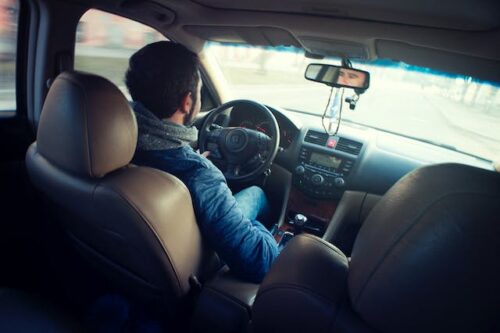
Car accidents can, unfortunately, happen in a plethora of ways. T-bone collisions are particularly nasty kinds of accidents. In 2020, the Insurance Institute for Highway Safety reported that accidents with side impacts, like T-bone collisions, represented a whopping 23% of lethal car accidents that year. Because of both the frequency and the inherent danger of T-bone accidents, you need to know what T-bone accidents are, why they happen, and who is legally liable when T-bone accidents happen. Keep reading to learn just that, and if you or a loved one has been injured in a T-bone accident, do not hesitate to contact a San Mateo County car accident lawyer today.
What Happens in a T-Bone Accident?
A T-bone accident happens when one car hits another car on the side. These are called “T-bone” accidents because the positions of the two cars look like a letter “T” after the collision occurs.
If a driver without the right-of-way does not yield to a driver with the right-of-way, T-bone accidents become very possible. The non-yielding driver may then hit the other car. This is kind of collision is also called “t-boning” the other car.
Why Do T-Bone Accidents Happen?
Traffic intersections with a stop light or stop sign are common places where T-bone accidents take place.
Suppose, for instance, that a driver turns to the left, in their mind assuming that oncoming drivers will stop when the light turns yellow. Instead, the oncoming driver goes through the yellow light, thus hitting the turning car.
A car might run a stop sign in another scenario, leading to a side-impact collision.
Different (though likely expected) circumstances can cause drivers to make less-than-optimal decisions. Distracted driving is frequently where the story begins: texting and driving, eating or drinking and driving, driving in a state of mental and/or physical exhaustion. Reckless driving, speeding, or dangerously icy roads can also make driving more dangerous.
Who is Legally Liable When a T-Bone Accident Happens?
If there is an at-fault driver after a T-bone accident, then that driver would be liable for the damages, injuries, and losses arising from the accident in an at-fault state like California.
(“At-fault state” means just that: the driver who caused an accident is liable for damages, injuries, and losses. This is as compared to a no-fault state like New Jersey, where every driver and injured party involved in a car accident files a claim with their insurance, such that no one is required to prove fault before getting compensation from their insurance.)
In a T-bone accident, one of the drivers may be at fault, though at times no one is at fault. Badly designed roads with absent or blocked stop signs and roads with faulty traffic signals can all cause an accident even if both drivers are doing their best.
If one of the drivers illegally turned left or ran a stop sign, then that driver is at fault. To win their case, California victims would need to show:
- The other driver had a duty to be reasonably careful
- But the driver was instead negligent, showing less care than a reasonable person would in the same situation
- The T-bone accident was a direct result of the other driver being negligent
- And the T-bone accident resulted in actual harm that you experienced.